Brealey, Myers. Principles of Corporate Finance. 7th edition
Подождите немного. Документ загружается.

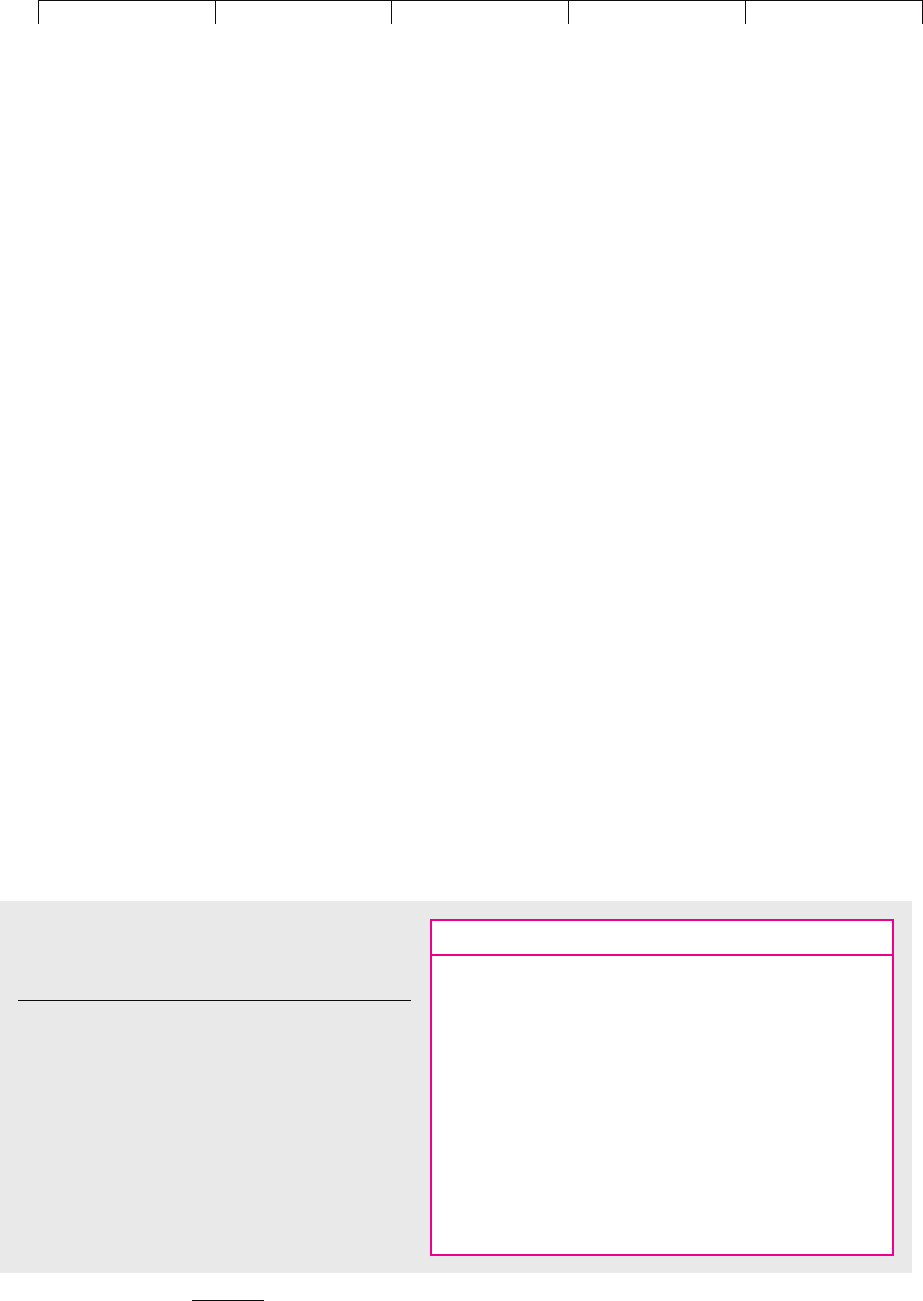
Brealey−Meyers:
Principles of Corporate
Finance, Seventh Edition
IX. Financial Planning and
Short−Term Management
29. Financial Analysis and
Planning
© The McGraw−Hill
Companies, 2003
to managers and employees alike. The economic role of reported earnings is anal-
ogous to an annually-baked pie that is divided among the important stakeholders
(government, employees, shareholders and managers alike), the size of the pie
having first been determined with prudential regard for the financial stability of
the corporation.... Reporting a loss would eliminate bonus, dividend and tax dis-
tributions, to the chagrin of all the stakeholders.”
1
Another difference is the way that taxes are shown in the income statement.
For example, in Germany taxes are paid on the published profits and the depre-
ciation method must therefore be approved by the revenue service. That is not so
in Anglo-Saxon countries, where the numbers shown in the published accounts
are generally not the basis for calculating the company’s tax payments. For in-
stance, the depreciation method used to calculate the published profits may dif-
fer from the depreciation method used by the tax authorities.
Sometimes the effect of these differences in accounting rules can be substantial.
When the German car manufacturer, Daimler-Benz, decided to list its shares on the
New York Stock Exchange in 1993, it was required to revise its accounting practices
to conform to U.S. standards. While it reported a modest profit in the first half of
1993 using German accounting rules, it reported a loss of $592 million under U.S.
rules, primarily because of differences in the treatment of reserves.
Countries also differ in the amount and accuracy of the information disclosed in
a company’s financial statements. For example, the Russian company, Lukoil, owns
some of the largest oil reserves in the world and has 120,000 employees. Yet until re-
cently its income statement reported just four numbers, with no accompanying
notes. A study by LaPorta et al. rated a sample of countries on the quality of their ac-
counting standards.
2
Table 29.1 provides an extract from their results. In general,
they concluded that company accounts were more informative in those countries
with a Scandinavian or English legal tradition and less so in those with a French or
German tradition. However, there was a huge variation within each of these groups.
818 PART IX
Financial Planning and Short-Term Management
1
See R. J. Ball, “Daimler-Benz (DaimlerChrysler) AG: Evolution of Corporate Governance from a Code-
law ‘Stakeholder’ to a Common-law ‘Shareholder Value’ System,” Graduate School of Business, Uni-
versity of Chicago.
2
LaPorta et al., “Law and Finance,” Journal of Political Economy 106 (December 1998), pp. 1113–1155.
Country Legal Tradition Rating
Sweden Scandinavian 83
United Kingdom English 78
United States English 71
France French 69
Hong Kong English 69
Switzerland German 68
Japan German 65
Germany German 62
South Korea German 62
Mexico French 60
India English 57
Peru French 38
Egypt French 24
TABLE 29.1
Country ratings on quality of accounting standards
(a high figure indicates high quality).
Source: LaPorta et al., “Law and Finance,” Journal of Political
Economy 106 (December 1998), 1113–1155.
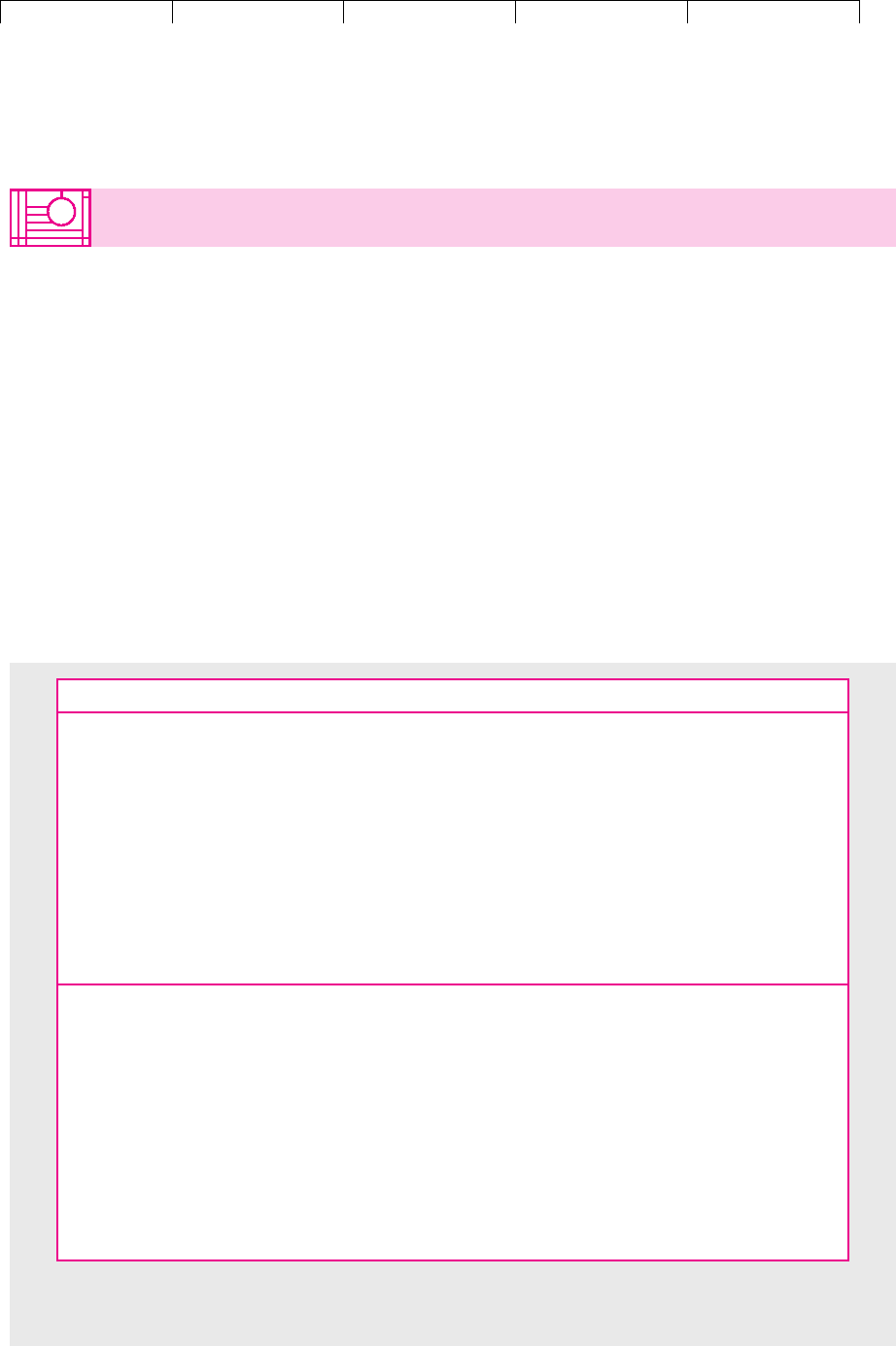
Brealey−Meyers:
Principles of Corporate
Finance, Seventh Edition
IX. Financial Planning and
Short−Term Management
29. Financial Analysis and
Planning
© The McGraw−Hill
Companies, 2003
Your task is to assess the financial standing of the Executive Paper Corporation.
Perhaps you are a financial analyst with Executive Paper and are helping to de-
velop a five-year financial plan. Perhaps you are employed by a rival company that
is contemplating a takeover bid for Executive Paper. Or perhaps you are a banker
who needs to assess whether the bank should lend to the company. In each case
your first step is to assess the company’s current condition. You have before you the
latest balance sheet, income statement, and sources and uses of funds.
The Balance Sheet
Executive Paper’s balance sheet in Table 29.2 provides a snapshot of the company’s
assets and the sources of the money used to buy those assets.
The items in the balance sheet are listed in declining order of liquidity. For ex-
ample, you can see that the accountant lists first those assets which are most likely
to be turned into cash in the near future. They include cash itself, marketable
securities and receivables (that is, bills to be paid by the firm’s customers), and
CHAPTER 29
Financial Analysis and Planning 819
29.2 EXECUTIVE PAPER’S FINANCIAL STATEMENTS
Assets Dec 1998 Dec 1999 Change
Current assets:
Cash & securities 75 110 35
Receivables 433.1 440 6.9
Inventory 339.9 350 10.1
Total current assets 848 900 52
Fixed assets:
Property, plant, and equipment 929.5 1,000 70.5
Less accumulated depreciation 396.7 450 53.3
Net fixed assets 532.8 550 17.2
Total assets 1,380.8 1,450 69.2
Liabilities and Shareholders’ Equity Dec 1998 Dec 1999 Change
Current liabilities:
Debt due within 1 year 96.6 100 3.4
Payables 349.9 360 10.1
Total current liabilities 446.5 460 13.5
Long-term debt 425 450 25
Shareholders’ equity 509.3 540 30.7
Total liabilities & shareholders’ equity 1,380.8 1,450 69.2
Other financial information:
Market value of equity 598 708
Average number of shares (millions) 14.16 14.16
Share price ($) 42.25 50.00
TABLE 29.2
The balance sheet of Executive Paper Corporation (figures in $ millions).

Brealey−Meyers:
Principles of Corporate
Finance, Seventh Edition
IX. Financial Planning and
Short−Term Management
29. Financial Analysis and
Planning
© The McGraw−Hill
Companies, 2003
inventories of raw materials, work in process, and finished goods. These assets are
all known as current assets.
The remaining assets on the balance sheet consist of long-term, usually illiquid,
assets such as pulp and paper mills, office buildings, and timberlands. The balance
sheet does not show up-to-date market values of these long-term assets. Instead,
the accountant records the amount that each asset originally cost and then, in the
case of plant and equipment, deducts a fixed annual amount for depreciation. The
balance sheet does not include all the company’s assets. Some of the most valuable
ones are intangible, such as patents, reputation, a skilled management, and a well-
trained labor force. Accountants are generally reluctant to record these assets in the
balance sheet unless they can be readily identified and valued.
Now look at the right-hand portion of Executive Paper’s balance sheet, which
shows where the money to buy the assets came from.
3
The accountant starts by look-
ing at the liabilities, that is, the money owed by the company. First come those lia-
bilities that need to be paid off in the near future. These current liabilities include debts
that are due to be repaid within the next year and payables (that is, amounts owed
by the company to its suppliers).
The difference between the current assets and current liabilities is known as the
net current assets or net working capital. It roughly measures the company’s poten-
tial reservoir of cash. For Executive Paper in 1999
The bottom portion of the balance sheet shows the sources of the cash that was
used to acquire the net working capital and fixed assets. Some of the cash has come
from the issue of bonds and leases that will not be repaid for many years. After all
these long-term liabilities have been paid off, the remaining assets belong to the
common stockholders. The company’s equity is simply the total value of the net
working capital and fixed assets less the long-term liabilities. Part of this equity has
come from the sale of shares to investors and the remainder has come from earn-
ings that the company has retained and invested on behalf of the shareholders.
Table 29.2 provides some other financial information about Executive Paper. For
example, it shows the market value of the common stock. It is often helpful to com-
pare the book value of the equity (shown in the company’s accounts) with the mar-
ket value established in the capital markets.
The Income Statement
If Executive Paper’s balance sheet resembles a snapshot of the firm at a particular
point in time, its income statement is like a video. It shows how profitable the firm
has been over the past year.
Look at the summary income statement in Table 29.3. You can see that during
1999 Executive Paper sold goods worth $2,200 million and that the total costs of
producing and selling these goods were $1,980 million. In addition to these out-of-
pocket expenses, Executive Paper also made a deduction of $53.3 million for the
value of the fixed assets used up in producing the goods. Thus Executive Paper’s
earnings before interest and taxes (EBIT) were
900 460 $440
million
Net working capital current assets current liabilities
820 PART IX
Financial Planning and Short-Term Management
3
The British and Americans can never agree whether to keep to the left or the right. British accountants
list liabilities on the left and assets on the right.
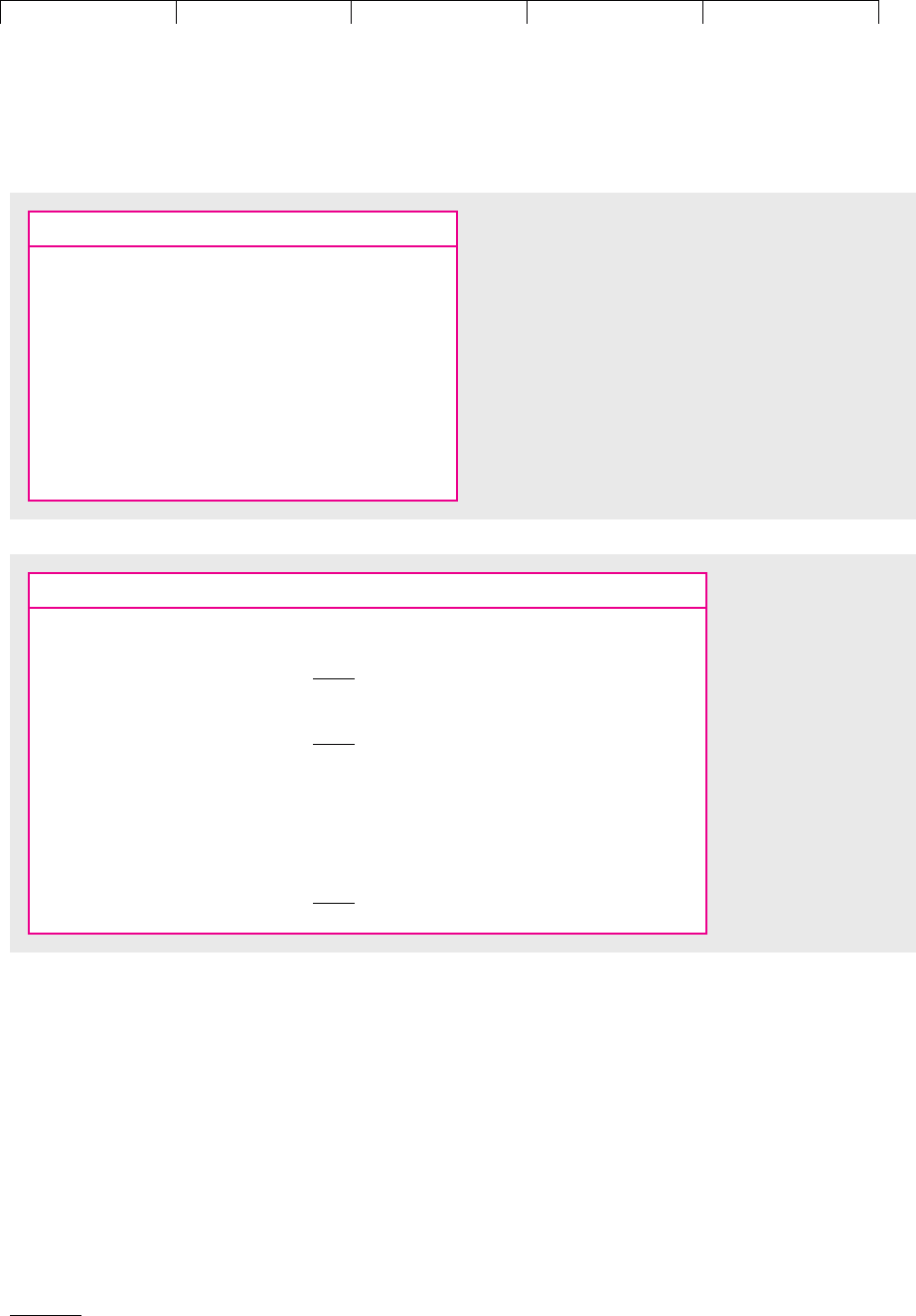
Brealey−Meyers:
Principles of Corporate
Finance, Seventh Edition
IX. Financial Planning and
Short−Term Management
29. Financial Analysis and
Planning
© The McGraw−Hill
Companies, 2003
Of this sum $42.5 million went to pay the interest on the short- and long-term
debt (remember debt interest is paid out of pretax income) and a further $49.7 mil-
lion went to the government in the form of taxes. The $74.5 million that was left
over belonged to the shareholders. Executive Paper paid out $43.8 million as divi-
dends and reinvested the remaining $30.7 million in the business.
Sources and Uses of Funds
Table 29.4 shows where Executive Paper raised funds and how it spent them.
4
Be-
side each row in the table we have added a brief note on how the figure is calcu-
lated. We will explain each item in turn.
2,
200 1, 980 53.3 $166.7 million
EBIT Total revenues costs depreciation
CHAPTER 29 Financial Analysis and Planning 821
$ Millions
Revenues 2,200
Costs 1,980
Depreciation 53.3
EBIT 166.7
Interest 42.5
Tax 49.7
Net income 74.5
Dividends 43.8
Retained earnings 30.7
Earnings per share, dollars 5.26
Dividend per share, dollars 3.09
TABLE 29.3
The 1999 income statement of Executive Paper
Corporation (figures in $ millions).
4
Notice that in a Sources and Uses of Funds table the different components of net working capital are not
separated out. When we discuss short-term planning in Chapter 30, we will show how to draw up a
Sources and Uses of Cash table, which separates out different items of net working capital.
$ Millions Notes:
Sources:
Net income 74.5 See Table 29.3
Depreciation 53.3 See Table 29.3
Operating cash flow 127.8
Issues of long-term debt 25.0 See Table 29.2: 450 425
Issues of equity 0 See Tables 29.2 and 29.3:
540 509.3 (74.5 43.8)
Total sources 152.8
Uses:
Investment in net working 38.5 See Table 29.2: (900 460)
capital (848 446.5)
Investment in fixed assets 70.5 See Table 29.2: 1000 929.5
Dividends 43.8 See Table 29.3
Total uses 152.8
TABLE 29.4
Sources and uses of
funds for Executive
Paper Corporation,
1999 (figures in
$ millions).
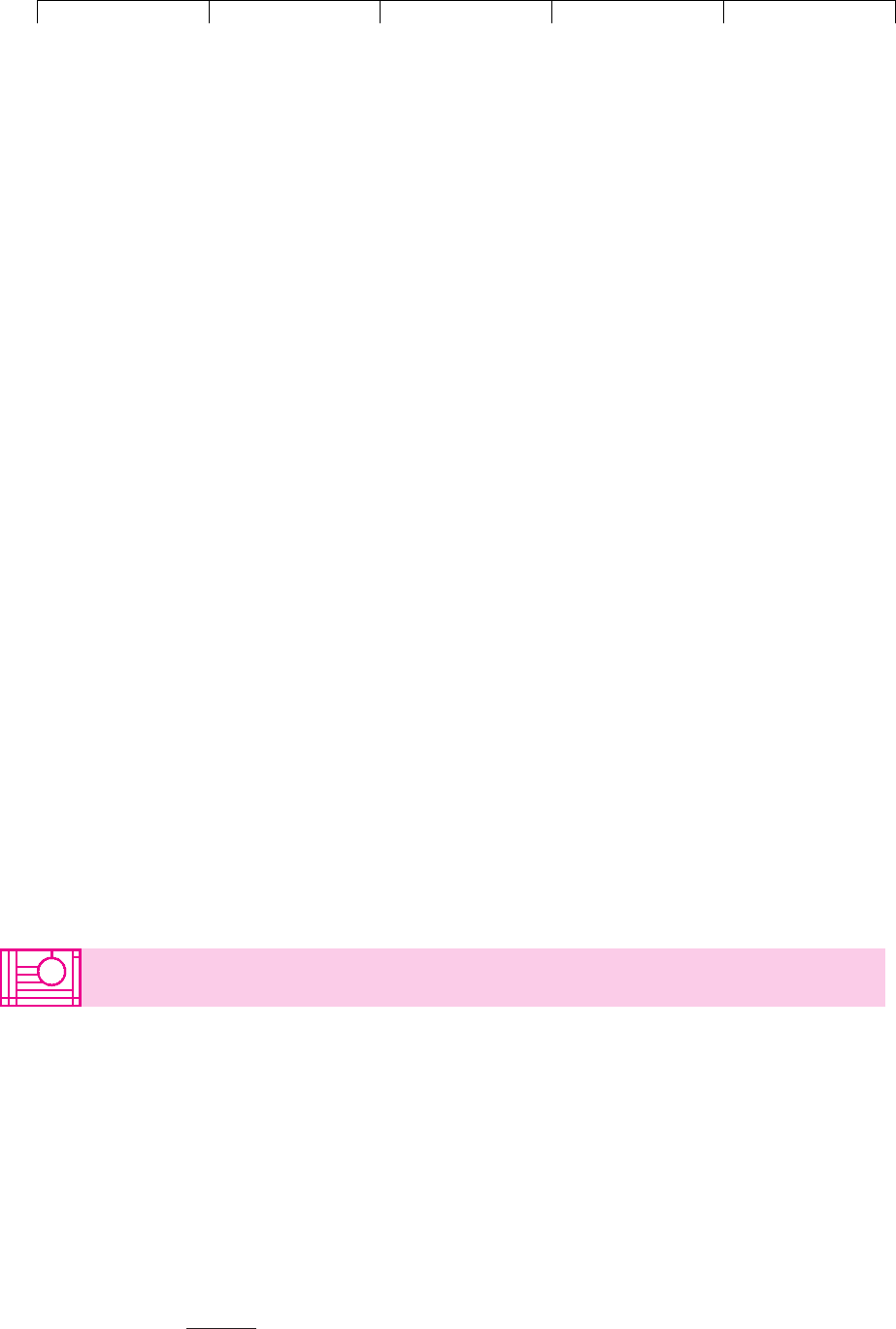
Brealey−Meyers:
Principles of Corporate
Finance, Seventh Edition
IX. Financial Planning and
Short−Term Management
29. Financial Analysis and
Planning
© The McGraw−Hill
Companies, 2003
Look first at the uses of funds. The money that Executive Paper generates is ei-
ther invested in net working capital and fixed assets or it is paid out to sharehold-
ers as dividends. Thus
Table 29.2 shows that in 1999 Executive Paper started the year with net working
capital of million. By the end of the year it had grown to
million. So the company invested an additional $38.5 million
in working capital. Over the same period fixed assets rose from $929.5 million
to $1,000 million, an increase of $70.5 million. Finally, the income statement in
Table 29.3 shows that Executive Paper distributed $43.8 million as dividends.
Thus, in total, Executive Paper invested or paid out as dividends 38.5 70.5
43.8 $152.8 million.
Where did the funds come from? There are two sources—the cash generated
from operations and new money raised from investors:
The income statement shows that in 1999 the company generated $127.8 million
from operations. This included $53.3 million of depreciation (remember deprecia-
tion is not a cash outflow) and $74.5 million of net income. This left a deficiency of
million that Executive Paper needed to raise from the capital
market. You can see from the balance sheet that Executive Paper raised this $25 mil-
lion by an issue of long-term debt (debt increased from $425 million to $450 mil-
lion). Executive Paper did not issue new equity capital in 1999. So why does the
balance sheet show an increase in equity of million? The an-
swer is that this increase in equity came from income that the company retained
and plowed back on behalf of its shareholders
. dividends 74.5 43.8 $30.7
million2
1retained earnings net income
540 509.3 $30.7
152.8 127.8 $25
new issues of equity
Total sources of funds operating cash flow new issues of long-term debt
900 460 $440
848 446.5 $401.5
in fixed assets dividends paid to shareholders
Total uses of funds investment in net working capital investment
822 PART IX
Financial Planning and Short-Term Management
29.3 MEASURING EXECUTIVE PAPER’S FINANCIAL
CONDITION
Executive Paper’s financial statements provide you with the basic information to
assess its current financial standing. However, financial statements typically con-
tain large amounts of data—far more than is contained in the simplified statements
for Executive Paper. To condense these data into a convenient form, financial man-
agers generally focus on a few key financial ratios.
Table 29.5 summarizes the key financial ratios for Executive Paper.
5
We
will explain how to calculate these ratios and use them to shed light on five
questions:
• How much has the company borrowed? Is the amount of debt likely to result
in financial distress?
• How liquid is the company? Can it easily lay its hands on cash if needed?
5
In addition to the ratios that we describe below, Table 29.5 includes a few other ratios that you may well
encounter. Some are simply alternative ways to express the same result; others are variations on a theme.
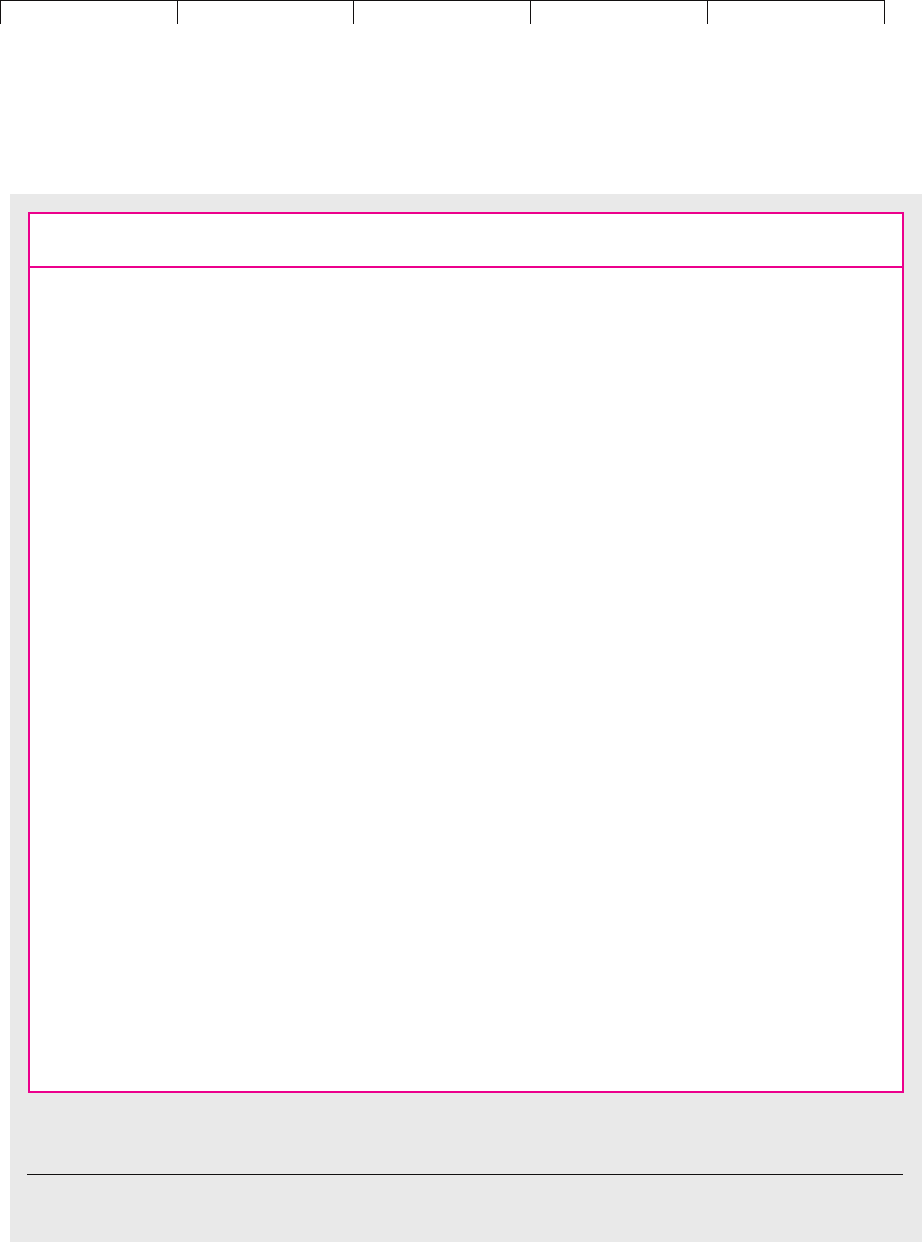
Brealey−Meyers:
Principles of Corporate
Finance, Seventh Edition
IX. Financial Planning and
Short−Term Management
29. Financial Analysis and
Planning
© The McGraw−Hill
Companies, 2003
• How productively is the company using its assets? Are there any signs that the
assets are not being used efficiently?
• How profitable is the company?
• How highly is the firm valued by investors? Are investors’ expectations
reasonable?
CHAPTER 29
Financial Analysis and Planning 823
Executive Paper
Paper Industry
†
Leverage Ratios:
Debt ratio (Long-term debt leases)/(long-term .45 .53
debt leases equity)
Debt ratio (including (Long-term debt short-term debt .50 .56
short-term debt)* leases)/(long-term debt short-term debt
leases equity)
Debt–equity ratio (Long-term debt leases)/equity .83 1.12
Times-interest-earned (EBIT depreciation)/interest 5.2 2.9
Liquidity Ratios:
Net-working-capital- (Current assets current liabilities)/total assets .30 .06
to-total assets*
Current ratio Current assets/current liabilities 2.0 1.3
Quick ratio (Cash short-term securities receivables)/ 1.2 .7
current liabilities
Cash ratio (Cash short-term securities)/current liabilities .2 .1
Interval measure* (Cash short-term securities receivables)/ 101.4 61.7
(costs from operations/365)
Efficiency Ratios:
Sales-to-assets ratio Sales/average total assets 1.55 .90
Sales-to-net-working- Sales/average net working capital 5.2 14.1
capital*
Days in inventory Average inventory/(cost of goods sold/365) 63.6 59.1
Inventory turnover* Cost of goods sold/average inventory 5.7 6.2
Average collection Average receivables/(sales/365) 72.4 45.9
period (days)
Receivables turnover* Sales/average receivables 5.0 8.0
Profitability Ratios:
Net profit margin (EBIT tax)/sales 5.3% 0.5%
Return on assets (ROA) (EBIT tax)/average total assets 8.3% 0.4%
Return on equity (ROE) Earnings available for common stockholders/ 14.2% 10.3%
average equity
Payout ratio Dividend per share/earnings per share .6 n.a.
Market-Value Ratios:
Price–earnings ratio (P/E) Stock price/earnings per share 9.5 n.a
Dividend yield Dividend per share/stock price 6.2% 1.8%
Market-to-book ratio Stock price/book value per share 1.3 3.6
TABLE 29.5
Financial ratios for Executive Paper and the paper industry, 1999.
*This ratio is an extra bonus not discussed in Section 29.2.
†
1999 ratios for U.S. paper and allied products.
Source: Compustat.
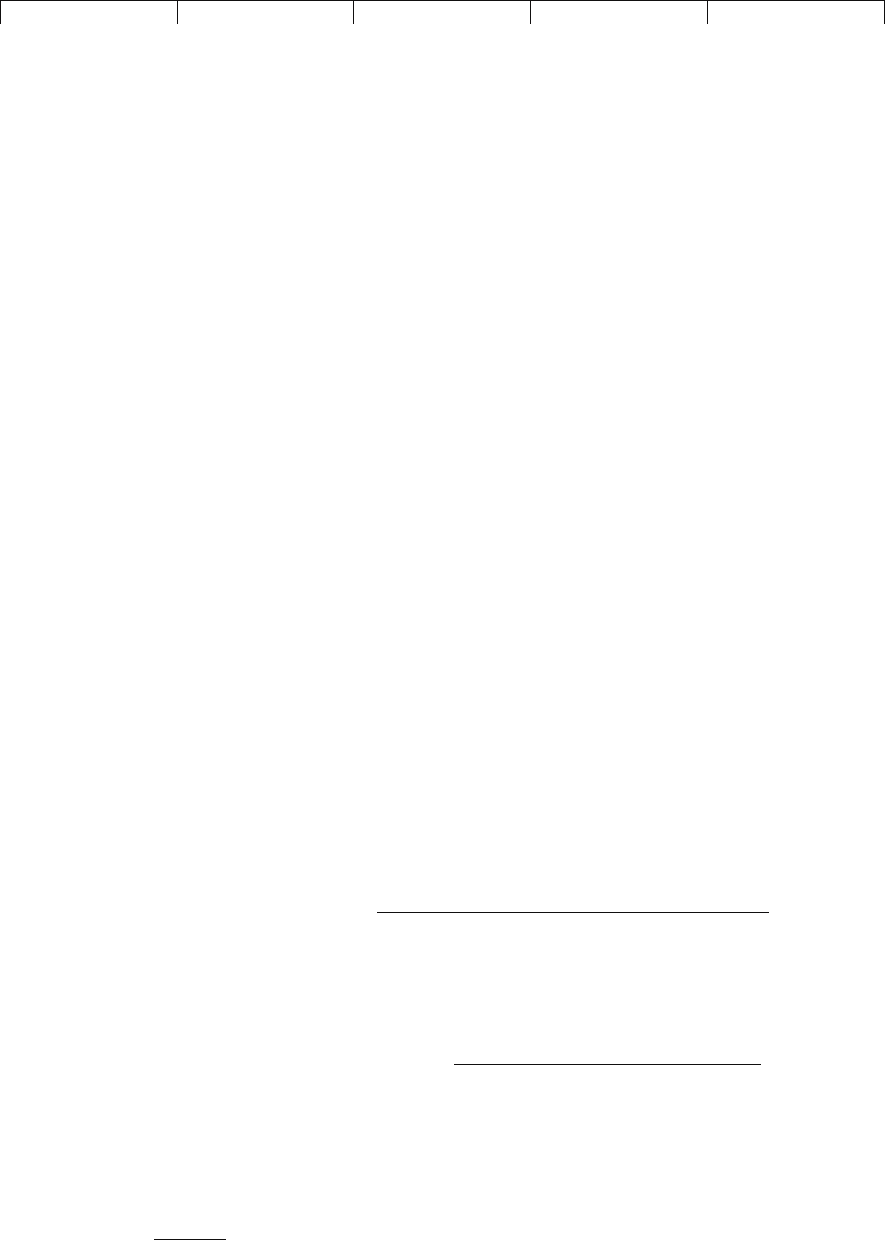
Brealey−Meyers:
Principles of Corporate
Finance, Seventh Edition
IX. Financial Planning and
Short−Term Management
29. Financial Analysis and
Planning
© The McGraw−Hill
Companies, 2003
When you calculate a company’s financial ratios, you need some criteria to decide
whether they are a cause for concern or a matter for congratulation. Unfortunately,
there is no “right” set of financial ratios to which all companies should aspire. Take,
for example, the company’s capital structure. Debt has both advantages and dis-
advantages, and, even if there were an optimal level of debt for company A, it would
not be appropriate for company B.
When managers review a company’s financial position, they often start by
comparing the current year’s ratios with equivalent figures for earlier years. It
is also helpful to look at how the company’s financial position measures up to
that of other firms in the same industry. Therefore, in Table 29.5 we have
compared the financial ratios of Executive Paper with those for the U.S. paper
industry.
6
How Much Has Executive Paper Borrowed?
When Executive Paper borrows, it promises to make a series of fixed payments. Be-
cause its shareholders get only what is left over after the debtholders have been
paid, the debt is said to create financial leverage. In extreme cases, if hard times
come, a company may be unable to pay its debts.
The company’s bankers and bondholders also want to make certain that Execu-
tive Paper does not borrow excessively. So, if Executive wishes to take out a new
loan, the lenders will scrutinize several measures of whether the company is bor-
rowing too much and will demand that it keep its debt within reasonable bounds.
Such borrowing limits are stated in terms of financial ratios.
Debt Ratio Financial leverage is usually measured by the ratio of long-term debt
to total long-term capital. Since long-term lease agreements also commit the firm
to a series of fixed payments, it makes sense to include the value of lease obliga-
tions with the long-term debt. For Executive Paper
Another way to say the same thing is that Executive Paper has a debt-to-equity ra-
tio of :
Notice that this measure makes use of book (i.e., accounting) values rather than
market values.
7
The market value of the company finally determines whether
the debtholders get their money back, so you might expect analysts to look at
450/540 .83
Debt– equity ratio
1long-term debt value of leases2
equity
450/540 .83
450/1450 5402 .45
Debt ratio
1long-term debt value of leases2
1long-term debt value of leases equity2
824 PART IX
Financial Planning and Short-Term Management
6
Financial ratios for different industries are published by the U.S. Department of Commerce, Dun and
Bradstreet, The Risk Management Association, and others.
7
In the case of leased assets accountants try to estimate the present value of the lease commitments.
In the case of long-term debt they simply show the face value. This can sometimes be very different
from present value. For example, the present value of low-coupon debt may be only a fraction of its
face value. The difference between the book value of equity and its market value can be even more
dramatic.

Brealey−Meyers:
Principles of Corporate
Finance, Seventh Edition
IX. Financial Planning and
Short−Term Management
29. Financial Analysis and
Planning
© The McGraw−Hill
Companies, 2003
the face amount of the debt as a proportion of the total market value of debt and
equity. On the other hand, the market value includes the value of intangible as-
sets generated by research and development, advertising, staff training, and so
on. These assets are not readily salable, and if the company falls on hard times,
their value may disappear altogether. For some purposes, it may be just as good
to follow the accountant and ignore these intangible assets. This is what lenders
do when they insist that the borrower should not allow the book debt ratio to
exceed a specified limit.
Debt ratios are sometimes defined in other ways. For example, analysts may in-
clude short-term debt or other obligations such as payables. There is a general
point here. There are a variety of ways to define most financial ratios and there is
no law stating how they should be defined. So be warned: Don’t accept a ratio at
face value without understanding how it has been calculated.
Times-Interest-Earned (or Interest Cover) Another measure of financial leverage
is the extent to which interest is covered by earnings before interest and taxes
(EBIT) plus depreciation. For Executive Paper,
8
The regular interest payment is a hurdle that companies must keep jumping if they
are to avoid default. The times-interest-earned ratio measures how much clear air
there is between hurdle and hurdler.
Is Executive Paper’s borrowing in the ballpark of standard practice or is it a mat-
ter for concern? Table 29.5 provides some clues. You can see that the debt ratio is
slightly lower than that of the rest of the paper industry and the times-interest-
earned is significantly higher than that of most companies.
How Liquid Is Executive Paper?
If Executive Paper is borrowing for a short period or has some large bills coming
up for payment, you want to make sure that it can lay its hands on the cash when
it is needed. The company’s bankers and suppliers also need to keep an eye on Ex-
ecutive’s liquidity. They know that illiquid firms are more likely to fail and default
on their debts.
Another reason that analysts focus on liquid assets is that the figures are often
more reliable. The book value of Executive’s newsprint mill may be a poor guide
to its true value, but at least you know what its cash in the bank is worth. Liquid-
ity ratios also have some less desirable characteristics. Because short-term assets
and liabilities are easily changed, measures of liquidity can rapidly become out-of-
date. You may not know what that newsprint mill is worth, but you can be fairly
sure that it won’t disappear overnight.
1166.7 53.32
42.5
5.2
Times-interest-earned
1EBIT depreciation2
interest
CHAPTER 29
Financial Analysis and Planning 825
8
The numerator of times-interest-earned can be defined in several ways. Sometimes depreciation is ex-
cluded. Sometimes it is just earnings plus interest, that is, earnings before interest but after tax. This last
definition seems nutty to us, because the point of interest earned is to assess the risk that the firm won’t
have enough money to pay interest. If EBIT falls below interest obligations, the firm won’t have to
worry about taxes. Interest is paid before the firm pays taxes.

Brealey−Meyers:
Principles of Corporate
Finance, Seventh Edition
IX. Financial Planning and
Short−Term Management
29. Financial Analysis and
Planning
© The McGraw−Hill
Companies, 2003
Current Ratio Executive Paper’s current assets consist of cash and assets that can
readily be turned into cash. Its current liabilities consist of payments that the company
expects to make in the near future. Thus the ratio of the current assets to the current
liabilities measures the margin of liquidity. It is known as the current ratio:
Rapid decreases in the current ratio sometimes signify trouble. However, they can
also be misleading. For example, suppose that a company borrows a large sum
from the bank and invests it in short-term securities. If nothing else happens, net
working capital is unaffected, but the current ratio changes. For this reason it might
be preferable to net off the short-term investments and the short-term debt when
calculating the current ratio.
Quick (or Acid-Test) Ratio Some assets are closer to cash than others. If trouble
comes, inventories may not sell at anything above fire-sale prices. (Trouble typi-
cally comes because customers are not buying and the firm’s warehouse is stuffed
with unwanted goods.) Thus, managers often focus only on cash, short-term secu-
rities, and bills that customers have not yet paid:
Cash Ratio A company’s most liquid assets are its holdings of cash and mar-
ketable securities. That is why analysts also look at the cash ratio:
Of course, these summary measures of liquidity are just that. They are no substi-
tute for detailed plans to ensure that the company can pay its bills. In the next chap-
ter we will describe how companies forecast their cash needs and draw up a short-
term financial plan to deal with any cash shortage.
How Productively Is Executive Paper Using Its Assets?
Financial analysts employ another set of ratios to judge how efficiently the firm is
using its investment in current and fixed assets. Later in the chapter we will look
at the financial implications of Executive’s ambitious plans to expand output, but
understanding the investment in fixed assets and working capital that is needed to
support Executive Paper’s current output may help to uncover any inconsistencies
in these plans for the future.
Sales-to-Assets (or Asset Turnover) Ratio The sales-to-assets ratio shows how
hard the firm’s assets are being put to use:
Sales
average total assets
2, 200
11, 380.8 1, 4502/2
1.55
Cash ratio
1cash short-term securities2
current liabilities
110
460
.24
110 440
460
1.20
Quick ratio
1cash short-term securities receivables2
current liabilities
Current ratio
current assets
current liabilities
900
460
1.96
826 PART IX Financial Planning and Short-Term Management

Brealey−Meyers:
Principles of Corporate
Finance, Seventh Edition
IX. Financial Planning and
Short−Term Management
29. Financial Analysis and
Planning
© The McGraw−Hill
Companies, 2003
Assets here are measured as the sum of current and fixed assets. Notice that since
assets are likely to change over the course of a year, we use the average of the as-
sets at the beginning and end of the year. Averages are commonly used whenever
a flow figure (in this case, sales) is compared with a stock or snapshot figure (to-
tal assets).
Notice that for each dollar of investment Executive generates $1.55 of sales, a
much higher figure than other paper companies. There are several possible ex-
planations: (1) Executive uses its assets more efficiently; (2) Executive is working
close to capacity, so that it may be difficult to increase sales without additional
invested capital; or (3) compared with its rivals, Executive produces high vol-
ume, low margin products.
9
You need to dig deeper to know which explanation
is correct. Remember our earlier comment—financial ratios help you to ask the
right questions, not to answer them.
Instead of looking at the ratio of sales to total assets, managers sometimes look
at how hard particular types of capital are being put to use. For example, it turns
out that Executive’s ratio of sales to current assets is less than that of other paper
companies. It is the ratio of Executive’s sales to its fixed assets that sets it apart
from its rivals.
Days in Inventory The speed with which a company turns over its inventory is
measured by the number of days that it takes for the goods to be produced and
sold. First convert the cost of goods sold to a daily basis by dividing by 365.
Then express inventories as a multiple of the daily cost of goods sold:
Notice that Executive Paper appears to have a relatively low rate of inventory
turnover. Perhaps there is scope for economizing on the company’s investment
in inventories.
Average Collection Period The average collection period measures how quickly
customers pay their bills:
The collection period for Executive Paper is somewhat longer than the industry av-
erage. The company may have a conscious policy of offering attractive credit terms
to lure business, but it is worth looking at whether the credit manager is lax in chas-
ing up the slow payers.
1433.1 4402/2
2,200/365
72.4 days
Average collection period
average receivables
sales 365
1339.9 3502/2
1,980/365
63.6 days
Days in inventory
average inventory
cost of goods sold 365
CHAPTER 29
Financial Analysis and Planning 827
9
We will see shortly that this last explanation does not hold up. The paper industry in 1999 earned a
negative profit margin.
